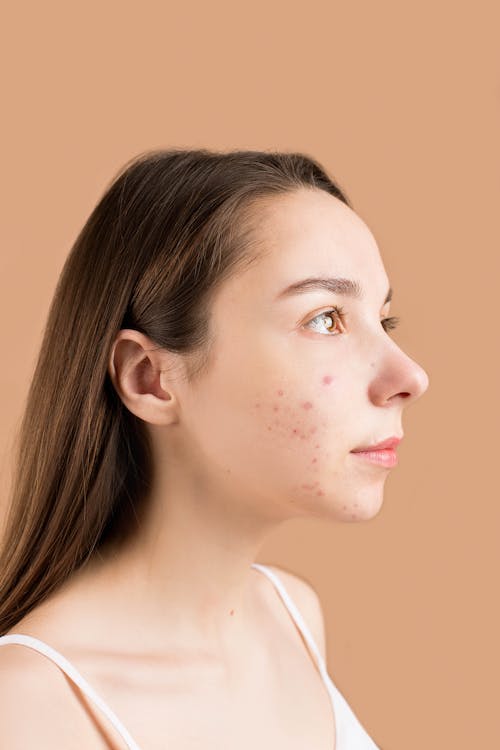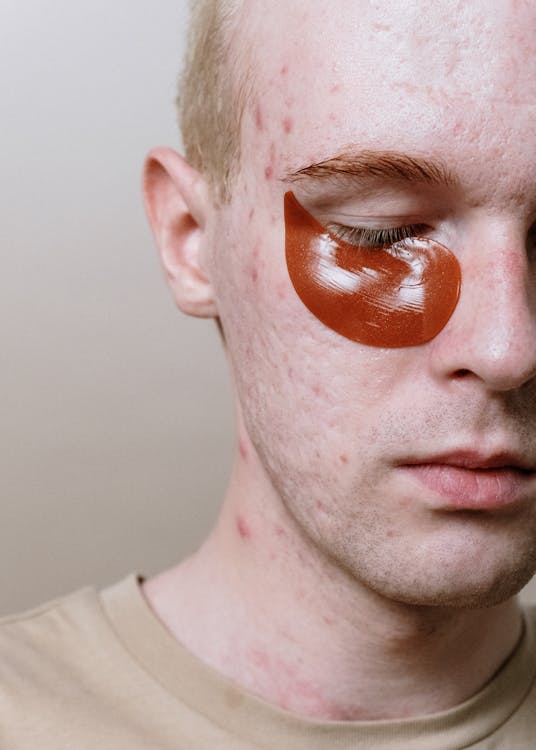Find Out Answers And What You Can Do To Deal With Acne

In case you missed it, be sure to read through our other posts that tackle everything there is to know about acne. Now, let’s dive into how we can address acne from both outside and inside.
For years, we’ve heard the same generic acne advice that’s often difficult to follow without an understanding of why it works. To help combat this issue and provide a deeper knowledge of how best to treat inflammation, let us explore each type more thoroughly and uncover what can be done for relief.
1) Your pores are clogged, and you’re not noticing them getting better?
Three possible causes of this reaction are:
CAUSE 1: Your skin is not detaching properly or renewing the way it should
Probable Reason: Skin cells begin at the base of your skin, and migrate outwards as they age. The most commonly known dead skin cells will detach themselves to make space for newer ones; everyone has a distinct shedding rate that is typically in balance with their renewal process. Unfortunately, some individuals have an inferior rate of shedding than regeneration – resulting in blocked pores.
Solution: To fight acne, use a mild exfoliant such as Acai Pulp Facial Scrub from 100% PURE or retinols/retinoids. These substances help to quicken the process of skin cell turnover, resetting your body’s natural pace for regeneration.
CAUSE 2: Your pores are not letting the gunk out
Probable Reason: Despite popular belief, the size of one’s pores is not an indicator of clogged skin. The actual culprit lies in your body’s production of lipids as they determine how easily sebum can leave a pore and if it gets stuck or flows freely. If you have gloopy solid sebum, this cannot pass out from even small openings; however, liquid sebum can pour through any sized opening with ease!
Solutions: If you’re looking for a solution to your problem, try two approaches. First off, use salicylic acid and clay products – but be mindful that these are drying agents that could lead to an excess of oil production on the skin, so it’s important not to overdo it. Additionally, don’t forget about refraining from picking or squeezing! Secondly, add topical linoleic acids like safflower oil or Organic Rosehip Oil as well as ample healthy fats into your diet in order to make sebum less dense. Remember, your body needs these nutrients from food intake in order for lipids which ultimately benefit you.
CAUSE 3: Your skin is producing an excess oil
Probable Reason: Your skin’s overproduction of oil could be due to a multitude of causes including an overheated complexion, overly dry skin, hormone imbalances, tension levels that are too high, and even consuming excessive dairy. The signals in dairy can trigger increased sebum production as well as inflammation through insulin hormones sent to the body.
Solutions: There are so many reasons for excessive oil production that it merits an entire blog post! If you would like to learn more about this, please let us know in the comments section. Additionally, if we have inadvertently overlooked any other common causes of the overproduction of sebum, feel free to mention them as well!
2) When bacteria start to take advantage of the food supply
Probable Reason: Acne-causing bacteria love nothing more than skin cells and oil accumulation. So when they penetrate a clogged pore, the body identifies it as an infection and mounts a defensive attack – leading to inflammation.
Solutions: To be victorious in the fight against acne, it is vital to keep your skin barrier and acid mantle unharmed. Your body’s natural protection system will shield your pores from bacteria – for this reason, using a pH-balanced cleanser like the Matcha Cleansing Balm from 100% PURE is crucial! Furthermore, protecting yourself from the inside out by maintaining a healthy body microbiome can also prove advantageous!
To reduce the risk of bacteria and germs finding a food supply on your face, try to avoid touching it. Alternatively, more assertive measures like benzoyl peroxide or antibiotics can be used but should be approached with caution as they might disrupt and injure the microbiome in the long term without preventing re-occurrences.
3) Body defense
Probable Reason: Know that there’s a deep connection between systemic inflammation and skin irritation. When your body is in a hyperactive state due to gut or other systemic inflammations, it might overreact when facing bacteria in pores – prompting your immune system to send protective cells into that area of the face. This can cause redness and white pus you may observe on your skin’s surface.
Solutions: Nourishing your body with nutritious foods, maintaining manageable levels of stress, and leading a vibrant lifestyle are all advantageous when it comes to keeping inflammation in check. By doing so, you can ensure that your body remains calm even during moments of difficulty.
In the new age of our time, many people are consumed by sanitation and hygiene. Unbeknownst to them, this has an adverse effect on their immune system since they lack exposure to microorganisms. This can be like a double-edged sword; while it is paramount that we learn healthy habits at a young age in order to avoid any further complications later in life, you can always start rectifying your predicament now by not being too drastic with handwashing or overusing strong cleaning chemicals when dealing with external elements such as surfaces.


